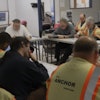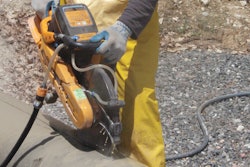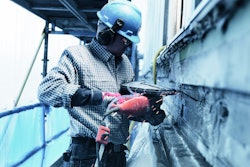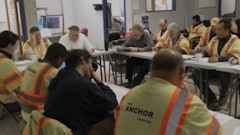Olivet Management LLC, a real estate development and management company that owns the former Harlem Valley Psychiatric Center in the Wingdale section of Dover Plains, NY, faces a total of $2,359,000 in proposed fines from the U.S. Department of Labor’s Occupational Safety and Health Administration. The company has been cited for exposing its own employees, as well as employees for 13 contractors, to asbestos and lead hazards during cleanup operations in preparation for a tour of the site by potential investors.
“Olivet knew that asbestos and lead were present at this site, yet the company chose to ignore its responsibility to protect its own workers and contractors,” said U.S. Secretary of Labor Thomas E. Perez. “The intolerable choice this company made put not only workers, but also their families, in danger.”
Olivet Management Statement on OSHA News Release
An inspection by OSHA’s Albany Area Office conducted in response to a complaint began Oct. 23, 2013. The inspection found that Olivet employees and contractors were exposed to asbestos and lead while performing renovation and cleanup activities. The work, which was directed and overseen by Olivet supervisors, included removing: asbestos- and lead-contaminated debris; asbestos-containing floor tiles and insulation; and lead-containing paint from walls, windows, door frames and other painted surfaces.
OSHA determined that Olivet knowingly failed to take basic safety precautions. The company neither informed their own employees nor the contractors about the presence of asbestos and lead, despite knowing that both hazards existed. As a result, Olivet did not: train employees in the hazards of asbestos and lead and the need and nature of required safeguards; monitor workers’ exposure levels; provide appropriate respiratory protection; post notices, warning signs and labels to alert workers and contractors to the presence of asbestos and lead. The company also did not provide clean changing and decontamination areas for workers, many of whom wore their contaminated clothing home to households with small children.
As a result of these conditions, Olivet was cited for 45 willful violations, with $2,352,000 in proposed fines. Twenty-four of the willful citations address instance-by-instance exposure of workers to asbestos and lead hazards. A willful violation is one committed with intentional, knowing or voluntary disregard for the law's requirement, or plain indifference to employee safety and health. Olivet was also issued one serious citation, with a $7,000 fine, for failing to inform waste haulers of the presence of asbestos and asbestos-containing materials, meaning asbestos from the site may have been disposed of improperly at an unknown location. A serious violation occurs when there is substantial probability that death or serious physical harm could result from a hazard about which the employer knew or should have known.
The citations can be viewed at http://www.osha.gov/ooc/citations/OlivetManagementLLC945519.pdf.
Renovation and cleanup activities can generate airborne concentrations of asbestos and lead. Workers can be exposed to both through inhalation or ingestion. Exposure to asbestos can cause disabling or fatal diseases, such as asbestosis, lung cancer, mesothelioma and gastrointestinal cancer. While lead exposure can cause damage to the nervous system, kidneys, blood forming organs, and reproductive system. Detailed information on asbestos and lead hazards and safeguards is available at http://www.osha.gov/SLTC/asbestos/index.html and http://www.osha.gov/SLTC/lead/index.html respectively.
In January of this year, the U.S. Environmental Protection Administration ordered Olivet to stop all work that could disturb asbestos at the facility. EPA’s investigation is ongoing.
Olivet has 15 business days from receipt of the citations and proposed penalties to comply, request a conference with OSHA's area director, or contest the findings before the independent Occupational Safety & Health Review Commission.Severe Violator Enforcement Program, which mandates targeted follow-up inspections to ensure compliance with the law. Under the program, OSHA may inspect any of the employer's facilities or jobsites.


















